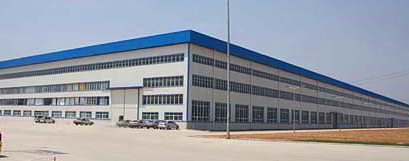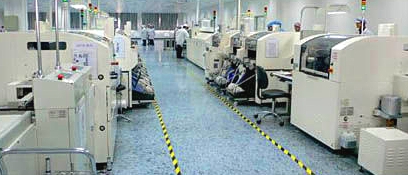HENAN SUNLAKE ENTERPRISE CORPORATION
- Country:
 China (Mainland)
China (Mainland) - Year Established: 2010
- Business type: Trading Company
- Contact Details | Similar Products


You May Like:
-
4-Cyanophenolate CAS No.: 767-00-0
USD $1.00-1.00 / Kilogram
-
4'-Chloro[1,1'-Biphenyl]-2-A CAS No.: 1204-44-0
USD $1.00-1.00 / Kilogram
-
4'-Chloro-Biphenyl-2-Ylamine CAS No.: 1204-44-0
USD $1.00-1.00 / Kilogram
-
4'-Chlorobiphenyl-2-Amine CAS No.: 1204-44-0
USD $1.00-1.00 / Kilogram
-
Diethyl Maleate CAS 141-05-9 CAS No.: 141-05-9
USD $1.00-10.00 / Kilogram
-
2-Amino-4'-chlorobiphenyl CAS No.: 1204-44-0
USD $1.00-1.00 / Kilogram
-
4'-Chloro-Biphenyl-2-Ylamine CAS No.: 1204-44-0
USD $1.00-1.00 / Kilogram
-
2,4-Dichloro-1,3-dinitro-5-( CAS No.: 29091-09-6
USD $1.00-1.00 / Kilogram
-
2,4-Dichloro-3,5-dinitrobenz CAS No.: 29091-09-6
USD $1.00-1.00 / Kilogram
74-83-9 CH3Br Methyl bromide CAS NO.74-83-9
- Min.Order Quantity:
- 1 Kilogram
- Purity:
- 98% Min
- Port:
- China main port
- Payment Terms:
- L/C,D/A,D/P,T/T,MoneyGram,Other
Keywords
- 74-83-9 CH3Br Methyl bromide
- 74-83-9
- CH3Br
Quick Details
- ProName: 74-83-9 CH3Br ...
- CasNo: 74-83-9
- Molecular Formula: CH3Br
- Appearance: Colorless viscid liquid
- Application: Organics;Aliphatic halogenated;Alkyl;A...
- DeliveryTime: within 4 to 8 days
- PackAge: aluminium bag
- Port: China main port
- ProductionCapacity: 10 Kilogram/Day
- Purity: 98% Min
- Storage: keep in dry and ventilated place
- Transportation: By sea/By air
- LimitNum: 1 Kilogram
- Grade: Industrial Grade
Superiority
| methyl bromide basic information |
| product name: | methyl bromide |
| synonyms: | (mono)bromomethane;1-bromomethane;ai3-01916;brommethan;brom-methan;brom-o-gas;bromo-gas;brom-o-gasmethylbromidesoilfumigant |
| cas: | 74-83-9 |
| mf: | ch3br |
| mw: | 94.94 |
| einecs: | 200-813-2 |
| product categories: | organics;aliphatic halogenated;alkyl;analytical standards;analytical/chromatography;building blocks;chemical synthesis;chromatography;environmental standards;halogenated hydrocarbons;herbicides;metabolites;organic building blocks;pesticides & |
| mol file: | 74-83-9.mol |
|
|
|
| methyl bromide chemical properties |
| mp | −94 °c(lit.) |
| bp | 4 °c(lit.) |
| density | 3.3 g/ml at 25 °c(lit.) |
| vapor density | 3.3 (20 °c, vs air) |
| vapor pressure | 1420 mm hg ( 20 °c) |
| refractive index | 1.4432 |
| fp | -34 °c |
| storage temp. | 2-8°c |
| water solubility | 1.522 g/100 ml |
| merck | 13,6056 |
| stability: | stable. incompatible with oxidizing agents, strong acids. this is an ozone-depleting chemical, and its use is restricted in many countries. |
| cas database reference | 74-83-9(cas database reference) |
| nist chemistry reference | methyl bromide(74-83-9) |
| safety information |
| hazard codes | t,n,xn,f,f+ |
| risk statements | 23/25-36/37/38-48/20-50-59-68-38-20/22-11-67-66-19-12-39/23/24/25-23/24/25 |
| safety statements | 15-27-36/39-38-45-59-61-36/37-26-24-16-7 |
| ridadr | un 1062 2.3 |
| wgk germany | 3 |
| rtecs | pa4900000 |
| hazardclass | 2.3 |
| hazardous substances data | 74-83-9(hazardous substances data) |
| msds information |
| provider | language |
|---|---|
| methyl bromide | english |
| sigmaaldrich | english |
| methyl bromide usage and synthesis |
| methyl bromide fumigation |
methyl bromide is used as a fumigant and pesticide. exposure may occur during fumigation activities. methyl bromide is a broad-spectrum fumigant that has been used around the world since the 1930s as a pre-plant soil fumigant to control insects, pathogens, and weeds, and to control insects in buildings and in commodities. it is also used for quarantine and pre-shipment applications. methyl bromide is one of the very few chemicals that were approved for broad-spectrum use in agriculture and pest control. the dominant use of methyl bromide worldwide is for pre-planting soil fumigation. methyl bromide is the most effective soil fumigant for killing plant pests, its use is being phased out because its emissions from soil can lead to stratospheric ozone depletion. 1992, parties to the montreal protocol on substances that deplete the ozone layer recognized that methyl bromide has an ozone-depleting potential (odp); thus it is identified as an ozone-depleting substance. |
| highly toxic | methyl bromide is highly toxic. studies in humans indicate that the lung may be severely injured by the acute (short-term) inhalation of methyl bromide. acute and chronic (long-term) inhalation of methyl bromide can lead to neurological effects in humans. neurological effects have also been reported in animals. degenerative and proliferative lesions in the nasal cavity developed in rats chronically exposed to methyl bromide by inhalation. chronic inhalation exposure of male animals has resulted in effects on the testes at high concentrations. epa has classified methyl bromide as a group d, not classifiable as to human carcinogenicity. |
| uses |
the primary use of methyl bromide is as a fumigant in soil to control fungi, nematodes, and weeds; in space fumigation of food commodities (e.g., grains); and in storage facilities (such as mills, warehouses, vaults, ships, and freight cars) to control insects and rodents. about 70% of methyl bromide produced in the united states goes into pesticidal formulations. nonpesticidal uses include degreasing wool and extracting oils from nuts, seeds and flowers. methyl bromide is also a methylating agent in the chemical industry. in the past, it was used as a refrigerant and as a fire-extinguishing agent in aircraft. the chemical name for this fumigant is bromomethane. methyl bromide is a restricted use pesticide (rup) because of its high acute toxicity to applicators. restricted use pesticides may be purchased and used only by certified applicators. the bimolecular nucleophilic substitution (s(n)2) reaction of methyl bromide and oh- in aqueous solution has been investigated using a multilayered-representation quantum mechanical and molecular mechanics methodology. |
| precautions |
(1) under the law, methyl bromide may only be applied by licensed applicators or those under their direct supervision. licensed applicators must meet strict criteria governing safe handling, storage and use of the compound, which helps to reduce exposure potential. (2) workers involved in methyl bromide application or the removal of containment after fumigation are likely to have the highest risk of exposure, followed by those workers who first re-enter the area after fumigation. to reduce this risk, regulations restrict re-entry to application sites and require personal protective clothing and equipment for people who handle the product. (3) because methyl bromide is absorbed by the soil and readily dissipates in the atmosphere, bystanders such as farm workers in adjacent fields and those who live or work nearby are likely less at risk. even so, depending on soil and weather conditions and proximity to the application site, bystanders may come into contact with residues as the compound disperses. (4) references: www.toxipedia.org |
| chemical properties | colourless gas with a chloroform-like odour |
| usage | please view www.aldrich.com/epaods regarding the epa′s request for application information of ozone depleting substances |
| general description | colorless highly toxic volatile liquid or a gas. boiling point 3.56°c (38.41°f). usually odorless, but has a sweetish chloroform-like odor at high concentrations. used as an insecticide, a rodenticide, a fumigant, a nematocide, a chemical intermediate and as a fire extinguishing agent. |
| air & water reactions | nonflammable over a wide range of concentrations in air. slightly soluble in water (about 1.75 g/100 ml of solution at 20° c). reacts slowly with water to give methyl alcohol and hydrobromic acid. [k-o vol. 4]. |
| reactivity profile | methyl bromide is incompatible with metals, dimethyl sulfoxide, ethylene oxide. [lewis]. can give flammable products if mixed with potassium hydroxide, sodium hydroxide and other strong bases. methyl bromide in a steel tank reacted with an aluminum tube (part of the level gauge) producing methyl aluminum bromide. when the latter was subsequently exposed to air, enough heat was produced to ignite the methyl bromide -compressed air mixture above the liquid layer. the ensuing explosion shattered the tank (also incompatible with zinc, magnesium, and alloys)[chem. eng. pro. 58(8). 1962]. a reaction between methyl bromide and dimethyl sulfoxide resulted in an explosion that shattered the apparatus [nfpa 491m. 1991]. |
| health hazard | methyl bromide is a dangerous cumulative poison with delayed symptoms of central nervous system intoxication that may appear as long as several months after exposure. high concentrations can produce fatal pulmonary edema. chronic exposure can cause central nervous system depression and kidney injury. it may cause severe and permanent brain damage. severe neurological signs may appear when there is a sudden exposure to high concentrations following continuous slight exposure. methyl bromide has practically no odor or irritating effects and therefore no warning, even at hazardous concentrations. |
| fire hazard | when heated to decomposition, methyl bromide emits toxic fumes of bromides. hazardous polymerization may not occur. |
| methyl bromide preparation products and raw materials |
Details
1, high quality with competitive price:
we are manufacturer and can provide excellent quality products with factory price.
2, fast and safe delivery
1) parcels can be sent out within 24 hours after payment. tracking number is available.
2) secure and discreet shipment. you have various choices of transportation methods.
3, we have clients throughout the world.
1) professional service and rich experience make customers feel at ease, adequate stock and fast
delivery meet your desire.
2) market feedback and goods feedback are appreciated, meeting customers's requirement is our
responsibility.
3) high quality, competitive price, fast delivery, first-class service gain the trust and praise from the
customers.
4. established time: june. 1998 (16 years experience in manufacturing & exporting chemical raw material )
5. exported areas: europe , southeast asia , the middle east , africa , south america and some other
countries and areas.
6. business scope: organic & inorganic chemicals , pigments & dye stuffs , water treatment chemicals
, intermediates, food & feed additives and others.
7. company advantages: a strong r & d team, professional engineers and scholars with phd.
8. reliability: provide demanded goods and professional services.
9. welcome any serious inquiries from customers around the world, and sincerely hope to cooperate
with you for a brilliant future.
10. have exported to many countries around the word and received high praise.
11. have our own r&d group.
12. location of hennan sunlake enterprise corporation: henan province , the central plain of china.


